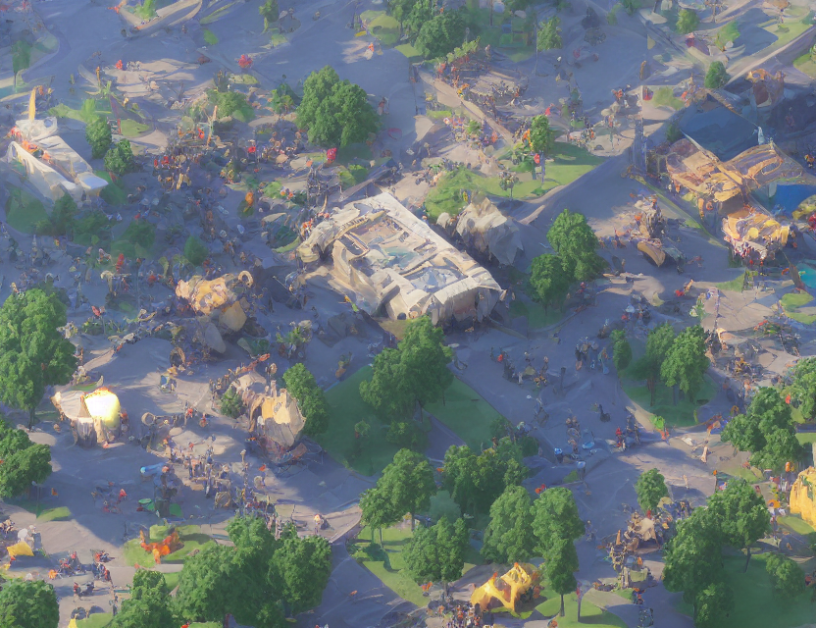In this article, we aim to decipher the complexities of 3D semantic segmentation and provide a comprehensive overview of the state-of-the-art technique called submanifold sparse convolutional networks (SSCNNs). These networks are specifically designed for 3D scene understanding and can be likened to a high-resolution microscope that peers into a complex, three-dimensional landscape.
To begin with, we must first grasp the concept of semantic segmentation itself. Imagine you’re an astronaut floating through space, observing the intricate details of a distant planet. Semantic segmentation is like labeling each pixel on that planet with its corresponding feature or material, such as water, land, or mountains. In the context of 3D scenes, this task becomes even more daunting due to the sheer volume and complexity of data involved.
Enter SSCNNs – a game-changing technique that streamlines the segmentation process by utilizing a novel network architecture. Unlike traditional approaches that rely on bulky convolutional layers, SSCNNs adopt a lightweight yet powerful submanifold structure to efficiently parse through the 3D data. This submanifold allows for a more focused and precise analysis of the scene, enabling the network to identify subtle details that might have been overlooked otherwise.
One of the key advantages of SSCNNs is their ability to handle irregularly-shaped objects in 3D scenes. Imagine trying to sort a jumbled pile of blocks with different shapes and sizes – it’s a challenging task, but SSCNNs can easily accomplish this by segmenting each block based on its unique properties. This capability is particularly useful in applications such as robotic navigation or autonomous driving, where the ability to identify and track objects is critical for safe and efficient operation.
Another significant aspect of SSCNNs is their adaptive nature – these networks can dynamically adjust their resolution depending on the complexity of the scene being analyzed. Picture a magnifying glass that can zoom in and out as needed to examine different areas of an object – SSCNNs work in a similar manner, ensuring that each pixel receives the appropriate amount of attention based on its importance.
The article also discusses the temporal aspect of 3D segmentation, where the authors propose a novel approach called event cubes. Imagine capturing a fireworks display on camera – each burst of color and light is an event that can be analyzed separately or in conjunction with other events. Event cubes allow for this analysis by organizing these events into manageable cubic structures, enabling the network to better understand the temporal relationships between them.
Finally, the authors introduce a constant rate factor (CRF) to optimize the performance of SSCNNs. Think of CRF as a dial that controls the amount of compression applied to an audio recording – by adjusting this dial, we can strike a balance between quality and file size. In the context of SSCNNs, CRF determines the trade-off between PSNR (a measure of image quality) and the rate at which events are transmitted. By adjusting CRF, we can achieve the optimal balance for our specific application.
In conclusion, "3D Semantic Segmentation with Submanifold Sparse Convolutional Networks" provides a comprehensive overview of SSCNNs – a powerful technique for 3D scene understanding. By leveraging the submanifold structure and adaptive resolution capabilities, these networks can efficiently identify and analyze complex objects in 3D scenes, making them an indispensable tool for a wide range of applications.
Enhancing Video Compression with Event Coalescing



